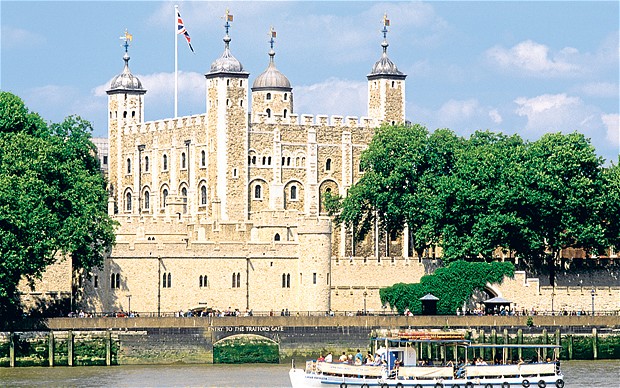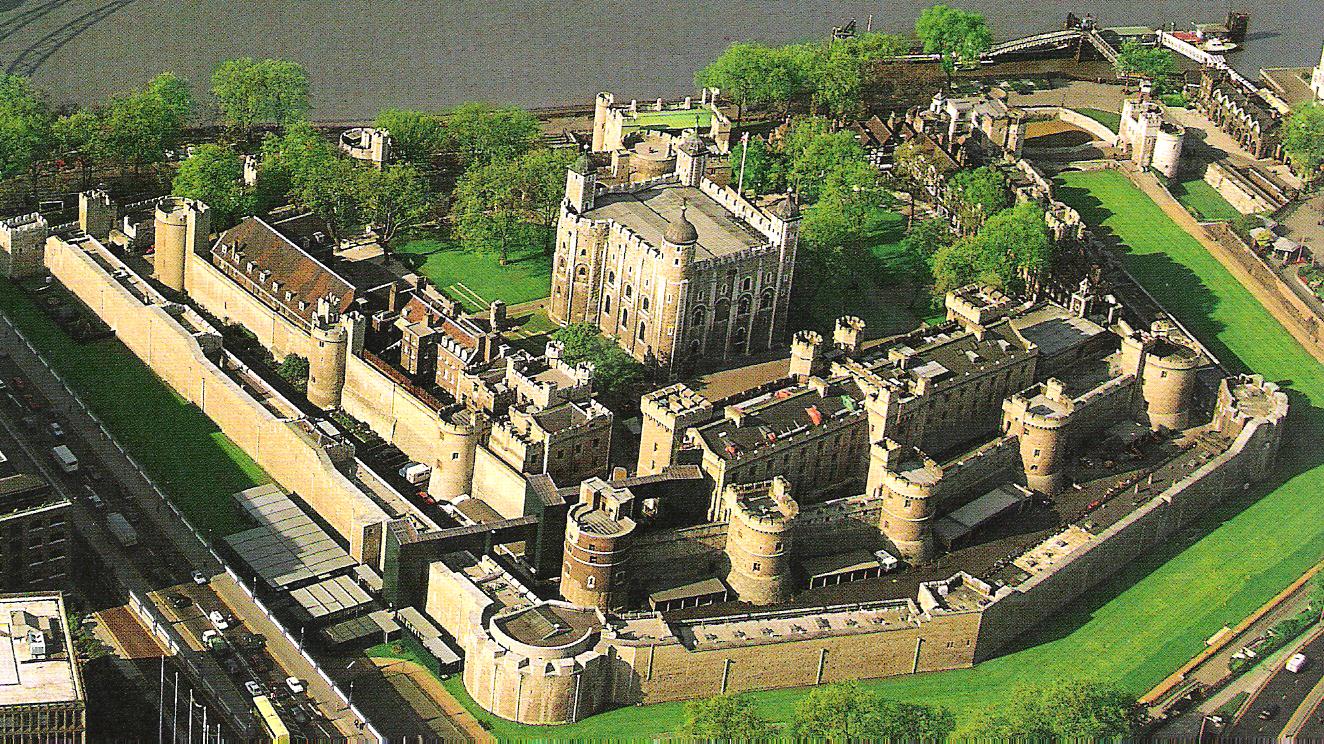
THE TOWER OF LONDON.
THIS Tower is denominated in the National Encyclopedia as, "a cluster of houses, towers, barracks, armories, and prison-like edifices." On the tower-ground, comprised in thirteen acres, there are thirteen towers in what is called the inner ward.
Besides these there are a few buildings outside the ward. The tower nearest the entrance to the ground, and that under which we pass by a gateway into the inner ward, is called the Bloody Tower. It is supposed that it was in this tower that the two royal children, the sons of Edward IV., were strangled, in 1483.
The White Tower, the first one built, was constructed under the direction of William, the Norman conqueror, in 1079-80. It measures one hundred sixteen feet from north to south, and ninety-six feet from east to west, and its height is ninety-two feet. It has an embattled roof with watch-towers at each corner, extending many feet higher than the roof. It consists of three stories, besides spacious vaults beneath. The external walls are fifteen feet thick. There is a wall seven feet thick running lengthwise of the building, dividing it from basement to summit, and another wall running crosswise, thus giving four rooms, two large and two small, on each floor. The ascent to the rooms of each story is by means of a winding stairway in the northeast corner.
This tower is now an armory. Some of its rooms are filled with curious weapons of the past, such as bows, arrows, lances, spears, shields, helmets, coats of mail, etc. In the department called the Horse Armory there are, in all, twenty-two equestrian figures, clothed in the armor of the various reigns from the thirteenth to the seventeenth century.
Most of the smaller towers were erected in the reigns of John, 1199, and Henry III., 1216, and these have been used as prisons. Various and curious are the devices and inscriptions cut by the prisoners, in the stones of these prison walls.
One of the most interesting of these prisons is the Beauchamp Tower. In this have been confined dukes, earls, bishops, etc., some of whom were doomed to execution on Tower Hill, which is just outside the tower grounds. One royal prisoner has left this inscription, in Latin, "The more suffering with Christ in this world, the more glory with Christ in the next world." Another wrote, "That which is sown by God in tears is reaped in joy." It was immediately in front of this tower that the scaffold was erected on which some of the queens and noble ladies were executed, among them Annie Boleyn, and Lady Jane Grey.
Fox, in his Book of Martyrs, says that Lady Jane traced with a pin, on the walls of her prison room, in Latin, these words,—
"To mortals common fate thy mind resign,
My lot today tomorrow may be thine."
There is a chapel of St. Peters in the tower grounds, and beneath this the remains of Lady Jane are deposited.
Among the many who were imprisoned in London Tower and then executed on Tower Hill, we
may mention Cromwell, Archbishop Laud and the Duke of Monmouth, who was proclaimed as a rival king to James II., at Taunton, Somerset, in 1685.
J. N. LOUGHBOROUGH.
